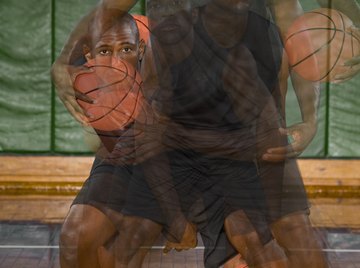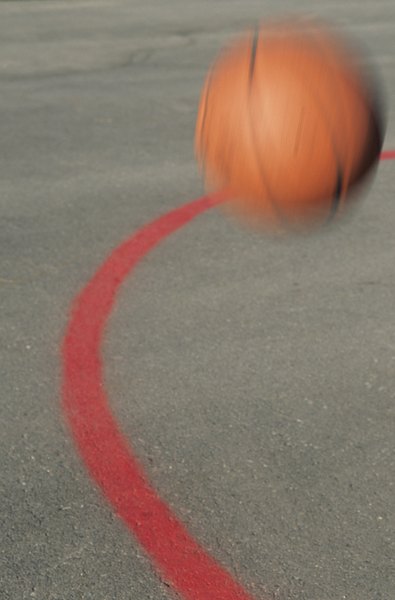
When you combine a competitive sport like basketball with science, a lot of fun can happen. Athletes around the world actually depend on their studies in such sciences as math and physics to affect their performances, whether they use them to get better shot percentages, improve hand-eye coordination, or learn to have better balance when holding the ball. While you might not be one of those professional NBA stars, there are several fascinating experiments you can try yourself, using a basketball as the main focus.
Getting the Bounces

One of the most important factors in a good basketball game is the surface that it's played on. The ball is dribbled constantly, and the way it bounces can be the difference in the game. You can experiment to find out why some surfaces are more suited to the game than others by taking a basketball to different locations, dropping the ball from a specific height, and measuring how high the ball bounces at its highest point. Choose at least four good surfaces, such as asphalt, wood, tiles and carpet, and then compare the results with your school or community gym floor.
Taking a Better Shot

Improving the shot percentage is a very important part of the athlete's game. It takes a combination of balance, hand-eye coordination, auditory sense, strength and vision to throw the ball through the net, whether it's from the left wing, or a dazzling 30-footer from half-court. You can demonstrate how percentages work by allowing volunteers to take some shooting practice from the foul line. Start with blindfolding them, then covering each eye, right and left, in turn, and record their shooting percentages by dividing the number of baskets made by the number of throws. For example, if Player A made 7 out of 10 baskets, he shot 70 percent. You can also test how noise affects their game by covering their ears with headphones and recording their percentages again. Try letting them shoot with one arm behind them, or standing on one leg, and record how their game is affected by balance as well.
Nothing But Net
You can get a good idea how complex physics comes into play by demonstrating how a basketball moves through the air and goes into the net during a normal foul shot. The higher the arc of the ball, the longer distance it travels, and the better target the basket becomes. This is because at a higher arc, the ball is heading down towards a nearly circular target. If the basketball is thrown at a much lower arc however, the shot isn't as easy to make, because the ball is heading at an angle towards a more elliptical target. You can demonstrate this principle by having your basketball volunteers shoot at the basket from the foul-line 10 times at a high arc, and then 10 times with a much lower one. Record the number of baskets made, and you'll notice that the throws with the higher arcs had the better shot percentage. The lesser arcs probably bounced off the back or front of the rim. Some basketball players, though, develop their foul-shooting techniques by mastering the challenges of low-trajectory shots, so physics doesn't always prevail.
Spinning the Ball
Another physics theory you can show is how spinning affects a basketball when it leaves a player's hand from the foul line and heads for the net. Spinning the basketball helps bounce it against the rim or backboard, and into the net. Your volunteers can take turns putting front, side, and backspin on the ball as they shoot, while you record the different directions the ball goes once it hits the rim and the backboard. You'll notice that once the basketball hits a surface, it changes velocity opposite to the direction of the spin. Putting backspin on a ball that hits the rim will give it a better chance of going in because its forward momentum is slowed, and will tend to drop into the net easier.
References
About the Author
Paula Bogas co-owns a research, writing and editing company. She has written countless grants, business plans, books, reports, ebooks and other documents. Bogas has coauthored five books and published a novel. She has been a writer for more than 25 years and holds a Master of Library Information Sciences.
Photo Credits
Jayme Thornton/Digital Vision/Getty Images
